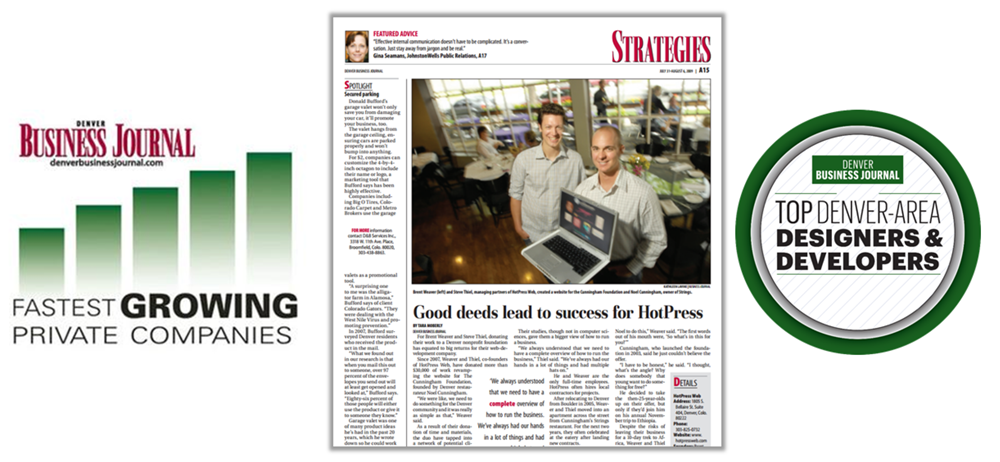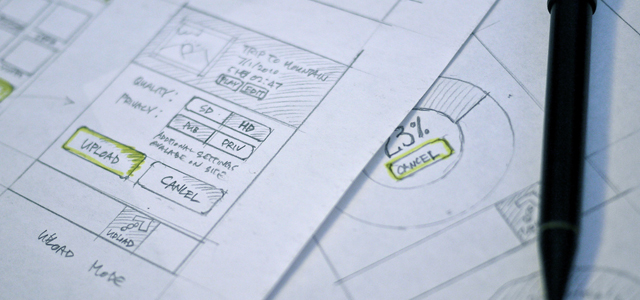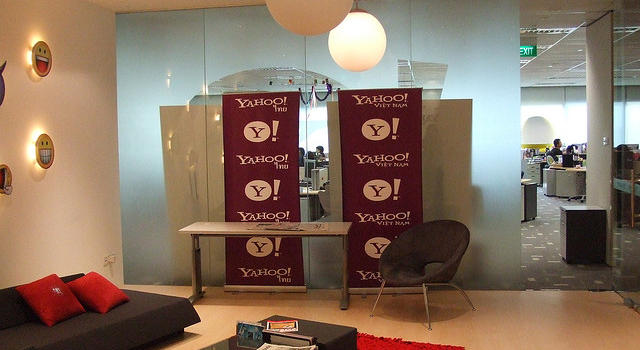The post 25 Beautiful Design Agency Websites for Inspiration & Ideas appeared first on Speckyboy Design Magazine.
]]>Design agency homepage designs vary significantly depending on the agency’s focus and target audience. Some agencies may opt for a minimalist approach with simple typography and clean lines, while others may use bold colors and graphics to create a more playful and attention-grabbing design.
When seeking design inspiration for an agency homepage, it’s important to consider the agency’s unique selling points and brand identity. A website that communicates the agency’s strengths and value proposition can help differentiate it from competitors and build trust with potential clients.
Some key elements to consider incorporating into a design agency homepage include a clear and concise tagline, high-quality visuals that showcase the agency’s work, a well-structured navigation menu, and prominent calls to action to encourage users to explore the site further or contact the agency.
By carefully considering these design elements and studying other successful creative agency homepage designs, you can create compelling website designs that attract and engage potential clients.
You might also like our collection of free design agency website PSD templates.
The post 25 Beautiful Design Agency Websites for Inspiration & Ideas appeared first on Speckyboy Design Magazine.
]]>The post Freelancers vs. Agencies: Which is Right for Your Project? appeared first on Speckyboy Design Magazine.
]]>This can lead to an interesting choice for clients. Will they go with the team-based approach or choose to deal with a single person? The decision isn’t an easy one by a longshot. Each route has its own pros and cons – which we’ll dive into in a bit.
But for freelancers, it can feel like you’re severely outgunned when competing against larger companies. When you think about it, even a 2-person agency is (in manpower, at least) twice the size of a solo freelance business. As a side note, I am amazed by even the most basic arithmetic.
So, in a David vs. Goliath type of scenario, is this a fair fight? Let’s conduct a “weigh-in” and see who comes out on top.
Full disclosure, I write this as a longtime freelance designer. That’s the life experience I’ve had, and certainly this article will reflect that. But I also aim to be fair in the comparison. If that’s not the case, call me out in the comments. Now, with that disclaimer out of the way, here’s the opening bell!
Round 1: Breadth of Services
No matter their size, every business has a decision to make regarding which services to offer. For freelancers, it’s often a matter of figuring out what you’re best at and how each potential offering can affect your ability to do your job. If a particular service isn’t your forte or gets in the way of your core business, it’s probably best to avoid it altogether.
Agencies have the same vital decision to make, but their larger size means that they have a bit more leeway in this area. They often branch out into related services that allow them to offer a proverbial full suite. This tends to add a lot of convenience for larger clients who are looking for a one-stop shop for all of their needs.
For example, while a freelancer may decide to forgo such “extras” as SEO and email marketing, an agency just might have the resources to offer these services. In the right situation, that provides them with a definitive edge.
The best solution for freelancers isn’t to try and out-service larger competitors. Instead, focus on your strong points and sell your expertise. You can’t be everything to everyone, so just be you.
While agencies certainly have an advantage in the breadth and depth of what they can offer, it doesn’t necessarily mean that every client will want or need the whole package. But for those who feel more comfortable dealing with a single company that can provide ample resources, the decision may be a bit of a slam dunk.
Advantage: Agencies

Round 2: Cost
The varied pricing structures of the web design industry means that the same project can see wildly different cost estimates. And, while there are undoubtedly freelancers who charge high-end fees, it’s usually a safe bet that agencies will be among the most expensive options in an apples-to-apples comparison.
One of the biggest reasons for this is the mere fact that agencies need to pay multiple salaries. The more people you need to pay, the more that drives up the cost. Overhead costs, such as office space, are also a consideration here. But the move to “distributed” agencies, where employees work remotely from wherever they happen to be, can negate that a good bit.
Another potential price difference comes from the scope of services offered, as mentioned above. An agency that offers more services may add those extras into the overall cost. They might even make the argument that this provides more overall value – if the client requires these additional offerings.
Solo freelancers don’t have to worry about employees, although there is sometimes a need to bring in an outside contractor. Even so, the absence of paying someone else a steady salary every week, month or year should result in a lower price for the client. And those who work from home have yet another potentially large cost savings.
Advantage: Freelancers
Round 3: Quality of Service
Quality is a very subjective thing and can encompass a wide range of criteria. In this case, we’re talking about:
- The overall results of the final product (i.e., does it satisfy the client’s needs and wants);
- The client’s experience of working with the agency/freelancer to develop that product;
- The service provided after the final product is launched
The results here are completely dependent upon the person(s) working on the project. Either a freelancer or an agency could fail this test.
But I think it’s worth mentioning that the overall quality of service has a lot to do with the relationship you develop with a client. Again, this can go either way. But one potential advantage a freelancer has here is that the client only has one single point of contact. Agencies may have several links in the chain of client relations, which offers more opportunities to fall short.
Of course, the reverse argument is that an unresponsive or difficult freelancer means that the project fails outright. At least an agency might have others to pick up the slack for a fellow team member who isn’t pulling their own weight.
Advantage: Tie

Fair is Fair
So, does a freelancer bidding against an agency have a fair shot? Based on my experience, I think that they do in most situations. But I’ve also found there is a certain amount of stigma associated with freelancers. Some see us as unqualified simply because we’re not part of some large conglomerate and don’t work in a fancy office building. There’s not much you can do there.
However, most often clients will choose the company that provides the best match for their needs. When they consider what services are offered, how much it costs and how that fits into their overall goals, freelancers can win their fair share of projects.
That being said, it’s easy to feel afraid that you may not have a real chance to book a new client when competing against larger companies. My advice is this: If you want the project, go for it. You may just find that you have more to offer than you think.
The post Freelancers vs. Agencies: Which is Right for Your Project? appeared first on Speckyboy Design Magazine.
]]>The post 10 Free Design Agency Web Templates for Photoshop appeared first on Speckyboy Design Magazine.
]]>One of those essential resources is web templates for Photoshop, which can provide design inspiration and UI framework for your next redesign.
In this roundup, we’ve collected the best free web templates for Photoshop that are perfect for design agencies. With these templates, you can complete your redesign concept quickly and efficiently.
They all provide a starting point for your own design, saving you time and effort. They’re also fully customizable, allowing you to tailor the UI to your agency’s unique style and brand identity.
By utilizing web templates for Photoshop in your website design process, you can create a professional-looking website for your agency that stands out from the competition.
The post 10 Free Design Agency Web Templates for Photoshop appeared first on Speckyboy Design Magazine.
]]>The post 20+ Best Free Personal Portfolio WordPress Themes for Creatives appeared first on Speckyboy Design Magazine.
]]>Fortunately, there are many free portfolio WordPress themes available that offer customizable templates, elegant typography, and beautiful galleries, all designed to showcase your work in the best possible light. These themes also offer features like mobile responsiveness and search engine optimization, ensuring your website looks great and is easy to find on any device.
In this roundup, we’ve compiled the best free portfolio WordPress themes for creatives. Whether you’re looking for a minimalistic design or a bold and colorful aesthetic, there’s a theme out there that can suit your needs. These themes are perfect for showcasing your unique style and vision. Check out our selection and start building your professional portfolio website today!
You might also like our collections of personal portfolio PSD templates, or these personal portfolio HTML templates.
The post 20+ Best Free Personal Portfolio WordPress Themes for Creatives appeared first on Speckyboy Design Magazine.
]]>The post 25 Web Agency About & Team Pages for Design Inspiration appeared first on Speckyboy Design Magazine.
]]>A well-designed and structured about or team page can showcase your company’s personality and provide insight into the people behind the brand. Whether your team is small or large, there are design styles and layouts that can work for any size company.
To provide inspiration and a starting point for brainstorming your own company team page layout, we’ve compiled a collection of beautifully designed and well-structured about and employee team pages.
From minimalist and elegant designs to more playful and creative layouts, these sites demonstrate how you can create an engaging and informative team page that reflects your brand and fosters a sense of connection with your audience.
By incorporating these design elements into your own website, you can create a team page that not only showcases your company’s strengths and values but also helps establish a more personal and trusting relationship with your audience.
The post 25 Web Agency About & Team Pages for Design Inspiration appeared first on Speckyboy Design Magazine.
]]>The post How to Find the Real Value of Social Media for Web Designers appeared first on Speckyboy Design Magazine.
]]>Admittedly, I’m not the most fervent user of Facebook, Twitter or LinkedIn in terms of promoting my design business. But I’ve tried various techniques and have come away less than impressed with the results.
I’m personally convinced that trying to book traditional web design clients through these channels is a waste of resources. Today, I’ll explain why I feel that way, and also share some theories as to where the true value lies.
Who “Likes” Web Designers?
Back in the early days of Facebook, having a business page meant easily reaching every one of your followers. Of course, it didn’t stay this way for long.
Part of Facebook’s long-term strategy was to monetize reach. These days, getting your content in front of every fan requires promoting your posts.
For some industries, this may well be worth the cost. But for a freelancer or small web design agency, it seems like overkill.
That’s because of the type of following web designers tend to have. On Facebook, it’s often existing clients or supportive friends and family. Twitter seems to be designers following designers. LinkedIn is a tangled mess of professionals just looking for some self-promotion.
What’s the bottom line? Those looking for a new website probably aren’t following along. Therefore, paying to promote your posts may not produce the desired results. That being said, we can also forget about organically reaching new people through social channels. Those days appear to be long over.

Areas Where Social Media Actually Benefits Web Designers
So, maybe social media isn’t the client-magnet we all hoped it would be. That doesn’t mean these platforms have nothing to offer web designers, though. Quite the contrary.
There are some real benefits that come with participation. They just may not be as immediately gratifying as landing a new website client. Here are a few that come to mind:
Professional Development
The ability to level up your skills and knowledge is one of the biggest benefits of social media. Between the legions of individual designers/developers and industry-focused groups, you’ll find plenty of opportunities to learn.
As with anything on these networks, it’s all about following the right feeds. This takes some trial and error. But a good rule of thumb is to start with publications or individuals you trust for content and tutorials. From there, you’re bound to find new feeds of interest.
The fun part of this is that you might end up stumbling upon a tool or technique that you didn’t know about. These discoveries can lead to improving efficiency or even the development of a new service to sell to clients.

Expanding Your Network
Along with learning comes the chance to rub virtual elbows with others in the industry. This offers you a chance to commiserate with fellow designers and developers about the ups and downs of work. But it doesn’t have to be strictly professional. Even a bit of small talk about life can be a great way to reduce stress.
On the business side of things, getting to know other web pros can come in very handy. For example, asking your network about a challenging project can lead to some great suggestions – and maybe even a solution.
I can’t tell you how many times I’ve put out a question on Twitter, only to see my feed filled with helpful replies – usually within minutes. The camaraderie is wonderful, and it often leads us to try and help one another. This in itself is worth its weight in gold.

Consulting Possibilities
Finally, connecting with others opens the door to potentially getting hired on yourself as a consultant. It could consist of helping with a particular project, or develop into a steady gig. It’s not the traditional web design client, but it might actually be better for your business.
Quite often, booking a client who needs a website is one big jolt of revenue, followed by some maintenance money over time. Working as a contractor for another designer could be an opportunity to gain a consistent flow of higher-revenue projects. This isn’t a guarantee, but finding the right partnership is possible.

Social Media Has Potential, with the Right Expectations
As social platforms have matured, the realities of what they can do for various industries have become clearer. For some types of businesses, there is real potential for gaining new clients. Web design, however, doesn’t appear to be one of them.
That’s okay, though. There are some other areas where we can benefit. But much of it depends on our individual goals.
If you’re looking to sharpen your skills, there are a ton of groups and individuals out there to learn from. There are also plenty of opportunities to connect with other web professionals. And, if you’re in the market for some contracting gigs, the connections you make could help there as well.
No, social media is not the cure-all for a web design business. But there is some value. It just takes a realistic view of what you can achieve and a little patience.
The post How to Find the Real Value of Social Media for Web Designers appeared first on Speckyboy Design Magazine.
]]>The post You Want to Sell Your Agency, Take Stock of Your Assets appeared first on Speckyboy Design Magazine.
]]>In my work helping digital agency owners achieve freedom in their business and life at UGURUS, I often tell my backstory of selling my web agency in 2012. Thirteen years of blood, sweat, and tears bundled up in a single transaction. The American Dream at it’s finest. It was all part of my grand plan, right?
Hah!
I think we all know that’s not how business works. Entrepreneurship is the original scientific process. Trial and error baby!
I tried a bunch of stuff while building my agency, most of it failed miserably, a few things took, and those ended up being the basis for being able to sell. This article is about looking back in the rearview mirror with clarity and sharing the critical things that helped us sell and get a substantial valuation.
If we hadn’t done these few important things, our agency would have been worth squat. Zilch. Zero. The same value that ninety-seven percent of agencies are worth today.
During a recent UGURUS company retreat, a few of our agency owner mentors were discussing how many agency owners have built jobs for themselves, and don’t have businesses. To make sure we were all on the same page, I asked a fundamental question:
“What is a business?”
I got a lot of interesting answers, things like having revenue, employees, and clients. Part of the picture, but not the answer I was after. It’s simple I said:
“A business is an asset.”
So to sell a business, one must define the assets and come up with a market value. If you can’t do that, or if the assets don’t add up to a whole lot, then I guess your work is cut out for you. Three years before we sold our agency, we found ourselves in this situation.
Wake Up
Many agency owners mistake revenue with the ability to produce future income. Before I sold my agency, I bought a couple of small agencies whose owners were moving on. The conversation looked something like this:
Seller: “I’d like to get around $300,000 for my agency.”
Me: “How did you come up with that number?”
Seller: “That’s one and a half times my annual revenue.”
Me: “Can you break down that revenue for me?”
Seller: “Ninety-five percent is website and marketing projects from clients, and five percent is hosting and other small recurring revenue.”
Me: “Who is responsible for bringing in all that great client service revenue?”
Seller: “Oh, that would be me, I do all of the marketing and sales.”
Me: “Are you part of the transaction?”
Seller: “No, I’m moving on, remember?”
Me: “Ok good, so we’ve established that we’re not buying you – so let’s go ahead and ignore ninety-five percent of your current valuation.”
Then, he hung up on me. He was going to find someone serious. I told him that I was and that I would gladly pay cash for the only asset in his business – the five percent recurring revenue that didn’t require the owner’s direct participation to earn.
Two weeks later I got a call, and we had a deal.
Revenue is not an asset. It’s a flow. The system, process, or mechanism to generate revenue is an asset or stock. I can’t buy a flow, only stock. Historical revenue flow is proof that the mechanism works and to what degree, and therefore helps with valuation.
Think about buying a rental property – I can’t buy past rents. I can buy the property – and past rents give me an idea of future rents, but aren’t a guarantee. I’m buying the land and the dirt and the house which gives me the ability to charge future rents.
This agency owner had built up a client roster of hosting clients. Every month their credit card was charged an agreed-upon fee, and in return, their website would continue to run. The agency owner wasn’t involved. I wanted to buy that asset. I would have also bought him – if he was willing to stay in the business marketing and selling to generate client service revenue, but his response to that was, “If I wanted to keep doing that, I would just keep running my business.”
Your Assets
About three to four years before we sold our agency, my business partner gave me a presentation about obtaining peace of mind in our business. At the time only three percent of our annual income was dependable recurring revenue. We set a goal to achieve fifty percent by the end of the year.
(Optimistic much?)
It took us three years because over the same period our annual revenue tripled. Combine this with a web care helpdesk system that operated independent of my business partner and I’s involvement, and we had the basis for a legitimate valuation.
Let’s take a look at a few different types of assets that will help you determine what (if anything) your agency is worth today.
1. Clients, contracts, or products that generate ongoing revenue
Ideally with little to no interaction with you. It’s ok if someone interacts with these customers to create this revenue, as long as those interactions are done through well-documented processes that someone can operate with the right skills and training (the fewer skills and training the better).
In the web agency business, hosting is a no-brainer. Another recurring revenue that is great here is web care (maintenance and support) and marketing retainers. However, marketing retainers usually require highly skilled people and possibly the owner’s involvement. If the retainers are highly process driven and the people involved are part of the transaction (or easily replaceable), then these can offer value.
A good test here is to consider what would happen if you took a sabbatical for a year. Would this revenue continue to flow? If not, find what would have to be in place to change that, and now you have your plan.
2. Client list or book of business
This is a tricky one. Especially if the owner is the primary contact and person with the strong tie relationship to the client. Remember how an asset is the ability to generate future revenue? You need to prove that your client list has potential to do this. That you have a history of repeat business, and that the business is likely to happen without you.
If you have a history of one-time website, app, or marketing projects with little to no repeat business, then the value of your book of business diminishes quickly. However, if you can show that your client list purchases X amount on Y frequency and they request this work without owner involvement, you have an asset with value.
3. An opt-in email list
In the right hands, a permission-based email list is a very valuable asset. Especially one that has been proven to generate sales in the past. If you have an email list, but you’ve never made an offer to that list, then the value is in question – but it’s still an asset. One important caveat is how you acquired that email list. If you did it through an opt-in box that says “we will never sell your information,” then go ahead and punch yourself in the face. That means the list dies with your business as it can’t be sold or part of any transfer transaction.
If you’ve never made an offer or sold to your list, and you want to sell your agency at some point in the future, you might want to start using the list to generate clients or revenue now. Build up some history and processes around turning that list into money so you can illustrate and quantify the value in the future. Who wouldn’t want to generate more income now?
4. Marketing assets
Besides an email list, your other marketing assets hold a certain amount of value, but again, only if they have the (proven) potential to produce revenue. If you have a website that generates consistent leads without additional ongoing activity (unless that activity is well documented and process-driven), then this is an asset that can add to your valuation. Your websites search ranking for specific terms, traffic, and lead flow are all key measurables that you can quantify into dollars.
Besides your website, if you have trade show materials that can be reused, automated email series, or any other asset that is transferable and can illustrate a history of generating business, it can add value to the transaction. The business card that you hand out at events while networking is likely not a very good one to add to your list.
5. Brand goodwill
Kraft Foods is on the record as one of the first companies to ever be sold where the value in the brand’s goodwill far outweighed its value on paper. Philip Morris paid a lot for Kraft than it was worth on paper, and the difference was quantifiable as Kraft’s “brand goodwill.” Philip Morris wanted the reputation, not just the foods and factories.
For the value of your agency, there is likely a number here above $0, but how much depends on the decisions you’ve made to establish your agency’s brand as separate from yourself. Does your agency have a reputation that is worth something – or is it just you?

If people talk about your agency through word of mouth – and not just you as their “web gal” – then you might have something here. We spent a lot of our time doing pro bono work and getting free PR about our company in the press. I tried to avoid the story being about Brent Weaver as much as I could and instead made it about the agency. This helped establish some measurable goodwill in our local market.
6. Intellectual Property (IP)
Patents, trademarks, or copyrights. I have yet to meet an agency owner with a patent. I’m sure they are out there, but it’s just not that common. If you have something that is patentable and it has value, then you should get that going. More commonly I see savvy agency owners develop processes and systems that drive results for their clients and they choose to trademark that material. SixthDivision, an agency that focuses on automation, has a lot of trademarked material. They have taken their entire customer experience and turned it into a worksheet-based process with catchy names and video training.
Others turn their material into books like Ryan Levesque’s Ask Method®. The value of a process or method that has also been turned into a book with a large group of practitioners carries a lot more value than a process with no proof or following, but you could still make your case. If you haven’t yet put a ™ next to your proven process, get on that. Map out what you do for your clients, and start making it something you can protect.
7. People
Colorado is a work at will state and abolished slavery many years ago. So you can’t sell people. Thought we needed to get that straight first. That being said, there is value in not having to find a bunch of designers and developers. If you’ve already done the hard work of hiring, vetting, and training, then getting access to solicit your team to get hired by a new agency has value. If I’m a fast growing agency, buying other agencies can be a fast track talent acquisition path.
When small companies get bought, most of the time, it’s structured as an asset sale. Meaning that the buyer doesn’t usually take over the legal business entity. This protects them from having to deal with any liability from the business they are unaware of. Including people as assets might have to be a part of goodwill. This is an area we had legal help with and I suggest you do the same.
8. Equipment and furniture
(Old office gear acquired over a decade got donated to Goodwill.)

All those monitors, computers, desks, and chairs. While not worth a lot, can add a few thousand to your valuation. Since we hired pretty organically over many years, we had such a mishmash of gear and furniture that it didn’t make sense to include. If you just went out and splurged on a suite of MacBook Pros for the entire team, then there’s something there.
The good news about electronics, in particular, is that there is a robust market for this type of stuff outside the small business buyers market. So even if it doesn’t make it into your asset sale transaction, you can offload it to buyers via eBay or Craigslist.
We gave a lot of our gear to team members and their families. What was left, went to Goodwill.
9. Systems and processes
Documentation. Documentation. Documentation. Not for stuff that you are doing. That is interesting, but again, that requires you. This type of stuff can be rich nectar for a valuation if you can prove your systems produce revenue without your direct involvement. Documentation should outline the process and system, but also be complete with training material for a new hire to take over the seat with as little downtime as possible. I think a new hire should be able to take over a role or position within one week of being hired, assuming they have the right qualifications.
We had locked down our web care helpdesk into a single seat with a great system to drive revenue. Our clients were trained in how to interact with this system, and if I went on vacation for a month, it would continue to operate and drive revenue. I could show the system in action, and more importantly, I could export a report of the monthly income and cost to service that seat. We had documentation explaining how it worked and the qualifications of the person sitting in the seat.
Your valuation can skyrocket if you can lay out how marketing, sales, and operations work together to create revenue. If these different teams operate on these processes without you and your business generates revenue and profit, you have a fighting chance of using your gross revenue or net earnings as the basis for your valuation. Not only that, but you could probably bundle in your salary into that picture.
For some reason though, for all the talk agencies make about developing processes. Usually, it’s this area that proves the least developed. Maybe there are processes in place for managing projects, but I think the ones that matter are marketing and sales. If the front side to generating revenue is bottled up in the owners head with their secret “,I build relationships” recipe. Then there is big money left on the table.
Adding Up
This post isn’t about helping you determine your agencies valuation. There are a lot of different ways to come to that number. 1x revenue. 2x net earnings. 2 to 5x this or that number. The most important thing for you to do – if you want to sell your agency now or in the future – is to take stock of the assets you have today.
Bust out a spreadsheet. Take an inventory. Do your best not to kid yourself. When we looked at this for ourselves – particularly in the case of our recurring revenue – we weren’t happy with what we found. That dissatisfaction drove action and that action created value and a profitable exit. If you see a big fat $0 next to any of these items, your work is cut out for yourself.
Whether you want to sell or not, looking at your business as an asset is a good thought experiment. Before this thinking, I thought my business was me. I was so emotionally tied to my company. When I started to think of my business as separate from myself – like a rental property – it helped me treat it (and myself) better.
Perhaps you end up selling your agency as I did. Or maybe you build a business that can operate without your direct involvement so you can get paid well and take a vacation every once in a while.
That’s what life is about after all right?
Freedom to choose your path.
I did. I hope you can too.
The post You Want to Sell Your Agency, Take Stock of Your Assets appeared first on Speckyboy Design Magazine.
]]>The post The Essential Elements for Building a Design Agency Website appeared first on Speckyboy Design Magazine.
]]>Thus your website is intended to sell the skills your team can offer designing pixels for the world to use.
Let Your Purpose be Known
Prospective clients or even visitors browsing your website would like to know what you do right away. This can be accomplished in many different scenarios – large blocks of text or illustrations work nicely. Many of the newer designers will include a subtitle underneath the heading such as “we build mobile apps.” Short, sweet, and to the point is the name of this game.
When a visitor is interested in learning more about your company it’s important they can find this information. Assuming your navigation is setup above the fold you can hold more detailed info on another page, possibly with media included like video or images.

Another alternative is to display bits and pieces from your portfolio. A jQuery-based slider or image gallery slideshow would be the perfect element to include onto your homepage. It passively gives away both the type and quality of work your agency does. This strategy works well to draw attention even if you limit 2-3 work samples.
Include Social Profiles
I think it goes without saying to tack on a small contact form or at least offer an e-mail address somewhere. But many people don’t consider setting up official profiles for their companies on the many popular networks. Twitter, Tumblr, and Dribbble are a few examples where you can gather a large number of followers.
Graphic designers are also more open about sharing their work. You can find dozens of social networking icons available in download sets. Chances are good you can find a set to match your blog theme, maybe even choose between a few! This may seem like a small step but over time you slowly gain attention, and these profiles become a new means of communication and marketing for the business.
Unique Branding
When brainstorming ideas for your agency brand try to think of some bold concepts for digital symbols of communication. Something that will stand out of your website. Possibly carried from page-to-page so that each visitor will remember your name or logo. Many illustrators will use custom vector art or hand-drawn mascots in the header, footer, sidebar, or wherever they can fit.

Although to setup a unique brand you don’t need to be a skilled artisan. Even small details such as a wacky color scheme or textured navigation bar can stand out. If and when visitors return to your website they should remember these bits and pieces which stood out previously.
Another good option is displaying screenshots from your apps or portfolio works. Points are awarded to the most creative and unique ideas among designers for captivating an audience within the first few seconds of page load.
Dynamic Page Content
Web browsers have come a long way towards unifying the general use of webpage scripts. Code written in JavaScript or particularly jQuery is accepted by most of the mainstream browsers. You should feel encouraged to use this library of functions to build custom animation and Ajax content.
To throw out some ideas you may consider building a dynamic sidebar widget loading your most recent blog articles. Every agency should at least setup a simple blog to keep track of updates and recent happenings within the company. But you shouldn’t feel required to let these posts eat most of your homepage. Similarly you may try out the newer jQuery UI libraries for building animations in your header, navigation, footer, etc.

With Google Analytics you can actually track stats for which browsers your visitors are using. This provides you with a golden key to judging how much your website could rely upon dynamic content. Or even better, how to gracefully degrade all dynamic effects when they can’t be displayed properly. This is most prevalent with outdated browser software and visitors on mobile phones/tablets.
Incorporate Many Design Styles
Instead of trying to focus on a single niche for your agency website I recommend mixing up a bunch into one layout. Designers are always trying innovative things to stir up competition a bit. And when you aren’t limited to solely “minimalism” or “tabbed content” you can actually include both, and many more labels to boot.
If you have any favorite websites try to put together a list of features you enjoy from each of them. Specifically, from design labs and agency websites you hold in high esteem. There is rarely anything new under the sun except rehashed ideas in a new setting. Designers are part of this process by absorbing inspiration from many different works and creating a single design from this perspective.
Agency Website Showcase
To give you an idea, we’ve put together a small gallery of some really creative agency websites. You can take away some very unique ideas for your own design by studying the best of the best. Combining inspirational design with practical knowledge will ultimately lead you to creating one really awesome website!
If you’re looking for free design agency website PSD templates, take a look at this collection.
The post The Essential Elements for Building a Design Agency Website appeared first on Speckyboy Design Magazine.
]]>The post The Benefits of Teamwork in a Startup Environment appeared first on Speckyboy Design Magazine.
]]>In this article I want to discuss some of the key ideas behind teamwork in a startup environment. When first building your new idea the adventure can feel exciting and spontaneous. But without a steady plan you’ll eventually lose focus and derail off the tracks at some point. I’d like to break this mold by offering a few helpful tips for stabilizing any startup team.
Organizing Workflow
During the first few weeks at any startup there will be so much to accomplish. It feels like everybody is working in turbo drive to push out new e-mails, server changes, script updates, template bug fixes, etc.
This chaos will quickly grow out of control unless somebody takes the authority of organizing targeted actions. It’s best if 1-2 leading founders can help with long-term project management goals. Get everybody on the team together and discuss the most important objectives over the next few months. Which features are pertinent in determining the success of your startup?
Every small business should go through this stage during the early days of their growth. However if you have a team behind your ideas it’s much easier brainstorming on some more exotic topics. If the team is constantly running into pitfalls you may consider hosting these meetings once a month, or even more often if needed. This is perfect for keeping everybody working on the same page.
Open Delegated Tasks
A well-oiled startup will require some of the best talent you can find. Or even if they aren’t the best programmers or designers, your teammates should be motivated and willing to learn new talents along the way. Working at a startup can develop into the perfect opportunity for honing new skills in website design, development, and marketing.
Yourself or another project manager should be in charge of communicating with everybody on the team regarding their duties. Some people should be focusing on frontend web development, others on graphics and icons. You may also want to have people marketing to increase brand awareness. Make sure that everybody has a place working in their own niche.
It’s best if you can place teammates working on time-sensitive investments as the top priority. Make a small list of all the important things which need to get done, and schedule out some timeframes. Open communication offers trust and a level of respect which you can’t find at many larger tech companies.
Constructive Feedback
One huge benefit to working with a team is offering and gathering feedback. You can’t always count on your users to provide the most helpful suggestions. But you can always ask questions to your team of engineers and graphics designers.
These are the people working online each day and picking up small annoyances. Startups run into trouble when they grow too big for their own good and begin ignoring the most obvious criticisms. A familiar example is the recent sale of Digg.com to Betaworks after launching the horrendous v4 release. Smaller mistakes can snowball into big ones if ignored for too long, so try and keep an open mind about changing your opinion down the road.
Progressive Alterations
I will vouch for solid teamwork techniques even moreso when I am unable to work. There are plenty of days where you’ll be dealing with an emergency, running errands, stuck in appointments, or just feeling under the weather. These are the days you are happy to let the work fall back onto the team.
Over time you begin to realize and accept that your startup idea will continue growing with each passing week. New features are implemented quickly and traffic numbers will also draw attention. You want to construct a team that’s steady and willing to commit to building one exceptional product. This will of course require time, and thus progressive updates are the best solution for overall growth.
This method also leaves some free time for your team members to bounce around ideas before creating them. Perhaps your plans of 6 months ago are now outdated, and there are more critical issues to deal with. Having the stamina to rebound quickly is a major team asset, especially working in the realm of fast-paced Internet startups.
The Melting Pot
My favorite analogy is comparing a new startup team with a sweet melting pot of various ideas. You’re combining so many creative people together under one roof to build a single product, either for the web or desktop or mobile smartphones. This will sometimes lead to conflict. But understand that not all conflicts are bad if dealt with properly.
At times it can be favorable if you are open to new ideas and willing to let other people take charge for a while. Over time you’ll learn to trust each of your teammates with some larger-scale decisions. The melting pot theory can bring about new opinions and techniques which you had never even considered! This is what makes the concept so intriguing.
Education and learning is truly the greatest benefit you’ll receive from your friends and teammates. It’s impossible for one person to know everything, and this is why businesses can grow so quickly with a large group of dedicated people. This is also why a brand new startup can scale and reform new changes with tremendous speed.
Open yourself to these changes and they will appear much quicker. Even in a team of 3-4 people you can accomplish significant tasks by helping each other. The act of sharing knowledge and compelling ideas is how some of the best companies in our history have been started.
Final Thoughts
Internet startups are some of the more exciting businesses launching in the new century. Much of our past corporate structures have been molded around the physical world, and we’re just now entering a time where digital businesses are thriving in all sectors. Smaller startups can launch with 1 or 2 employees and scale very quickly.
I hope this article can offer some inspiration and ideas for working in a team setting. No great idea can be truly managed by one person. But you shouldn’t fall for hiring any ordinary team either. Pick your real battles and hold your teammates to the same high standards as your own quality of work. A successful team-centric business startup is all about reasonable compromise and commitment to the fullest extent.
The post The Benefits of Teamwork in a Startup Environment appeared first on Speckyboy Design Magazine.
]]>The post 11 Things I Learned From Freelancer to Agency Owner appeared first on Speckyboy Design Magazine.
]]>For a long time I thought freelancing was good enough to satisfy my craving. Technically I “owned my own business”. However, I could never grow my freelancing business past a certain point, and always wondered how great it would be to collaborate in a team environment.
So I tried the agency lifestyle. I had great co-workers, had a lot of fun, and ended up managing my department fairly quickly. However, no matter how high I climbed I was working for someone else and always wanted to have a say and voice my opinion on how things were run.
I have since left all of that behind. I have fulfilled my life long dream. In January 2011 I co-founded Falling Up Media. It has been a very fun, crazy, scary and successful year for us. Most importantly I have learned more in the past year than I have in the past 10 years! Hopefully many of you have similar aspirations and goals and can learn a few of the things I have learned in the past year:
1. Do Not Undersell Yourself
As a freelancer you often jump on every job you can find, no matter how much it pays. At least I know that I did, I had to! Clients will often come to you as a freelancer expecting some sort of “deal”. Its sad that it works this way because we all know your work is worth more as a freelancer than most value it at. Getting out of the habit of underselling ourselves was the best thing our agency did! We struggled with this for the first few months and it was tough to make ends meet with rent, bills and employees to pay.
Know what your value is, and stick too it! You will be quite surprised when you raise your prices how clients will react, show the value in your work and reassure the client this can be the best investment their business can make. Outside of non-profit, we absolutely give zero deals on any project – that is just how business works and you must get over this to survive. You couldn’t walk into your clients store and ask them to lower their prices could you?
The truth is that you will naturally work harder to add more value to every client when there is more skin in the game. Clients appreciate you more, and you will appreciate them more. Once you look at pricing with a magnifying glass and determine the accurate amount of time you spend on a project, most of the time you will be shocked at exactly how much you are undercutting yourself.
None of us want to work for free. Provide valuable work for valuable pay and be proud of what you bring to the table. Don’t feel ashamed at how much you charge.
2. Specialize In Something
Find your speciality and let everyone know that you are the best at what you do. We started out as a standard web design shop who did a little bit of internet marketing. We gained business and things were going well.
However, for some reason we never attracted the kind of business we were hoping for. Having been around WordPress since its creation, both my partner and I knew the ins and outs of it as good as anyone else in the field, and we are great at SEO.
We are proud of what we do and work hard every day to get better because it is our passion. We obviously knew these were our strong suites from the beginning, but when we started advertising and selling ourselves as WordPress and SEO specialists, we started attracting better paying clients with great projects that we loved to work on!
We still provide all other services our clients need of course. However, we make sure to put the right talents and people in place who are passionate about what they specialize in. Make sure you put your company in the position to attract the type of work that you want.
3. Work With Other Agencies
Our business blew up when we started working with other agencies. Remember that not every agency has the capabilities that you have, and you don’t always have the capabilities that other agencies may possess.
Stop thinking of them as competitors and start looking at them as opportunities and partnerships. Find a few local agencies who you think may be lacking in areas that you excel in and reach out to them. Don’t sell yourself in the first email, let them know that you really like their work and you would love to sit down with them and talk about how you can work together.
40% of our work comes from other agencies, and we love working with them as partners. You have to put some effort into relationship building, but its been well worth it for us!
4. Work On Your Business, Not In Your Business
Its very easy to get consumed in working in your business, but you must step back and start working on your business! We went through most of 2011 working in our business, until we met an awesome business coach! Our coach taught us that we must continue to work on our business and treat our business as a client by finding time to work on our projects.
But most importantly he taught us that we constantly need to work on monthly, quarterly, and yearly goals. These goals can be personal, professional, financial, or whatever you particular feel is right for your situation. But most importantly you need to make a plan on how you can obtain that goal, and follow through.
For example, one of our goals for 2012 was to increase our annual revenue by 60% by the end of 2012. We are well on our way to exceeding that goal because we made a plan to work on our business instead of in our business.
We set daily tasks, monthly milestones, and made sure that we are constantly evolving and getting better. When you focus on your plan and keep your goals in sight you will be determined to make them reality.
5. Find A Great Partner
My partner is amazing and our business couldn’t survive without him! Its great to talk over anything and everything to make conscious business decisions. I’ve read on almost every business book I have seen: Absolutely do not go into business with a friend. I am sorry, but I call BS on that!
We grew up together in the same small town, played little league together and went through high school together. While we were not the “BFF’s”, we do enjoy each others company, have an understanding of our personalities, and have ABSOLUTE TRUST in each other, and I think that is something you cant just stumble across. Finding a great business partner is going to help your business grow, while taking some of the day to day stresses off of you.
6. Have Solid Contracts
Luckily for us we have yet to come across a contract dispute. I would like to think its because we try to go the extra mile for every client, but it could be because we have a solid contract.
In every project proposal we very clearly outline every item of work that will be completed, what we will do, what we will not to, how long we will do it for, and what it will cost. Of course its much more detailed and in depth then that, but you get the idea! You can find contract outlines floating around the internet, but I would recommend having a lawyer draft one up for about $200-$500.
7. Build In Retainer Pricing
Any agency in our field should have at least one retainer service they provide. Sure, the huge one time projects can be nice, but there is no better feeling than at the first of the month you know you have $X,XXXs coming in automatically, and your bills are paid! We sell a lot of SEO & Social Media on monthly retainers, usually on 12 month contracts which provides great peace of mind for all of us.
Retainers also help you to be involved with your clients and their goals, and help you constantly learn and strive to add value together. It creates a working relationship between you and the client, and if you seek to add value to each one, also manifests into a lasting business bond.
What if you don’t provide SEO or marketing services? A few options you can consider are setting up a reseller plan and charge for monthly hosting, or coming up with some creative monthly website update package you can sell your clients. Even if its just a couple hundred bucks it all adds up quickly!
8. Stay On Top Of Project Management
As a freelancer, I was often just working with a few clients at a time, most of which were straight forward projects that I could easily manage through email, notes, or even memory (Yikes!). As our agency started gaining speed, I quickly realized that I just couldn’t remember everything!
The worst thing you want to do is drop the ball on a project, this makes you and your company look bad. You cant stay in business without a good project management system where you can easily separate, delegate and organize your tasks and priorities. This also is a good practice to keep your team in good communication. Remember you are not by yourself any more! You should always be thinking about your team and surrounding yourselves with good communication practices.
We struggled finding the right project management system for months, we looked at a number of free and paid options including Active Collab, Apollo, and Basecamp. We decided on Basecamp, its by far the easiest to use and has iCal integration, its relatively cheap, and integrates with a number of add-ons.
Aside from being an overall project management superhero, Basecamp is great to track your employee’s hours and completed work. I would highly suggest checking out Basecamp and the whole 37 signals suite.
9. Attend Conferences & Create Relationships
Days after we received our official LLC papers back from the state, we attended a WordCamp conference. We literally went to the conference as a brand new business with zero clients and we left with 5 soon-to-be clients, two of which are big names and have given us consistent work over the last year. We didn’t sell anyone, we just went to genuinely learn and meet people. For about $100 we were able to expand out knowledge and create valuable personal and business relationships.
Some industry related conferences are outrageously priced, and you often have to travel and pay for lodging and food. I suggest checking out a local WordCamp near you! WordCamp’s are usually around that $50 per person range. The atmosphere is always awesome and the amount of connections you can make is extremely valuable.
If you are looking to make a real impact, consider speaking at a conference. You will not only get in for free but you have the opportunity to set your business above the rest as a leader in your field. Speaking at a conference can also benefit your SEO, most conference websites have high domain authority and offer a link to all of the speakers websites.
10. Find A Mentor
Assuming most of the readers of this post are young professionals who are wanting to transform their freelance business into a serious agency, find a mentor! Both my partner and I thought we had it all figured out. We were closing deals, creating great work and getting paid. Then we met a couple of “mentors”.
When we met Pete, our business coach and Park, the owner of large agency here in town, we quickly realized how much we didn’t know about the business side of things! Since meeting Pete and Park, we have changed our whole perspective on business and have opened our eyes to opportunities we never knew existed.
Just by building relationships with other professionals, we are now on the receiving end of priceless insights and knowledge and our business is growing as a direct correlation of these mentor relationships.
11. Stay Ahead Of The Game And Never Be Afraid
Steve Jobs once said “I think we’re having fun. I think our customers really like our products. And we’re always trying to do better“. His quote is the mentality that every business owner should strive for, especially in our industry!
In our digital world you must love what you do and have fun every day you come to the office, that passion will naturally translate into your work. Right now, you are likely reading Speckyboy Design Magazine because you want to learn. Take your willingness to learn new things and encourage your employees to do the same, and you will be just fine.
Learn From My Experiences
I wouldn’t call any of these “mistakes”, rather just a natural learning curve. Learn from my experiences and it will make your transition from freelancer to agency owner much easier! There may be a lot of agencies popping up all over the place, but there is still plenty of room for any company who does quality work.
The post 11 Things I Learned From Freelancer to Agency Owner appeared first on Speckyboy Design Magazine.
]]>



